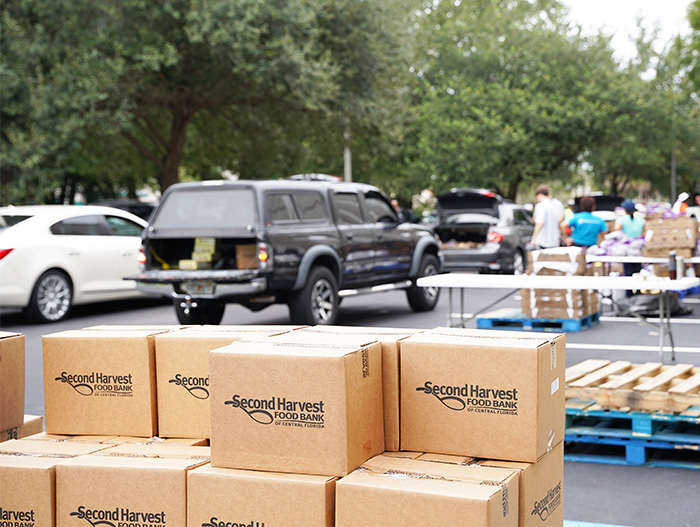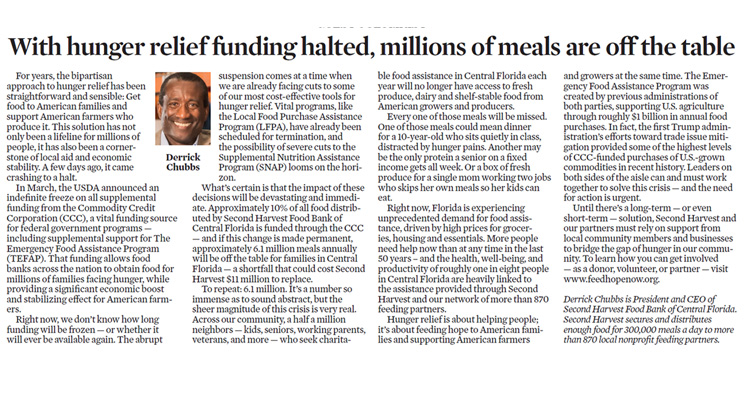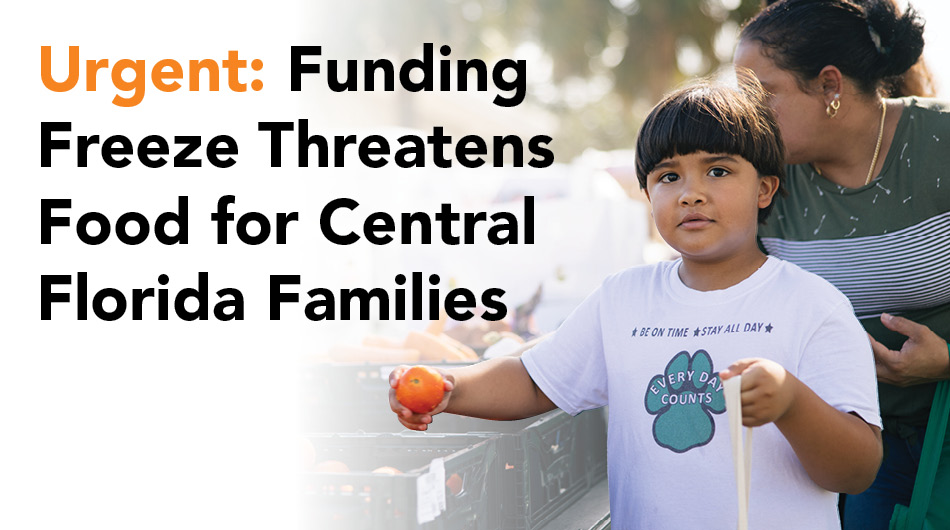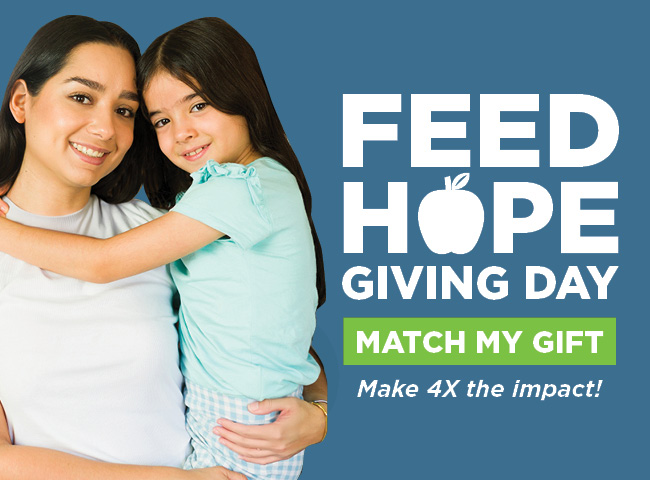Salad or soda. Carrot sticks or potato chips. Chicken soup with rice … or chicken nuggets with fries. When it comes to nutrition, not all choices are created equal. Parents want their kids to grow up healthy and happy, and most of us know that diet – what we eat, how much, and how it’s cooked – plays a major role in overall well-being.
But for the tens of thousands of families facing food insecurity in Central Florida, ensuring that everyone in the household is getting the nutrition they need may be challenging. When you’re choosing between buying groceries, paying the rent, or keeping the lights on at home, every dollar – and every meal – needs to stretch as far as it can.
Healthy food is on average twice as expensive per calorie than unhealthy food, CNBC reported in 2023. If you’re a parent trying to keep your kids fed, that means you’re doing the math every day: A burger off the dollar menu will keep the kids full until dinnertime. A salad is more expensive, and they’ll be hungry again in a few hours – and then what will you do?
So, even if a family is “getting enough to eat,” what they eat may be a recipe for poor nutrition. High-calorie, low-nutrient foods don’t meet the body’s needs for good fuel to focus, grow, and maintain strong bones and immunity. They’re also typically high in sugar, sodium and unhealthy fats, which can lead to serious lifelong health problems like hypertension, heart disease, diabetes, and more.
For a long time, food banks have focused on tackling the short-term needs of hunger by getting food to the families who need it, even if that food isn’t as nutritious as it should be. And that’s still important. But increasingly, public health experts and nonprofits agree it goes beyond that.
As the Director of Second Harvest Food Bank’s Health and Hunger Strategies, I’m part of a growing effort to expand existing hunger relief with nutrition, access and education as guiding goals. Through the Supporting Wellness at Pantries (SWAP) initiative, food banks across the Feeding America network are committing to giving families more healthy options – and helping them make informed choices.
SWAP ranks foods based on nutritional values with a color-coded stoplight system – green for go, yellow for caution, and red for foods that should only be eaten occasionally. These visual reminders help inform individual food choices and guide food pantries to assess and improve the types of food available.
After all, it’s not about controlling what people eat; it’s about empowering a healthy diet and a love of nutritious food. Maybe that translates into apple slices and tuna salad. Or three-bean soup and crackers. And maybe, once in a while, it’s oatmeal cookies and milk.
It's exciting to see SWAP spread to more food pantries across our local network, driven by grassroots decisions about what works best for each neighborhood and community. But there’s much more we can do to address health and hunger in Central Florida. Whether by volunteering, advocating, or getting involved as a Monthly Meal Maker, every effort makes a difference.
This column originally appeared in The Orlando Sentinel on November 30, 2024.










